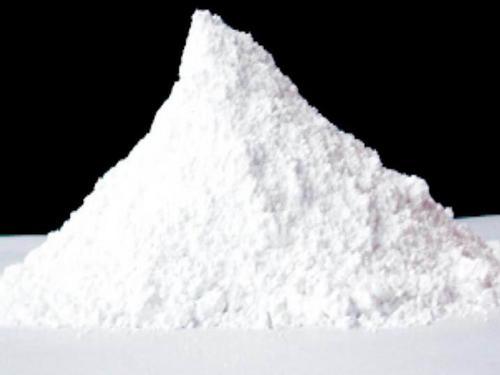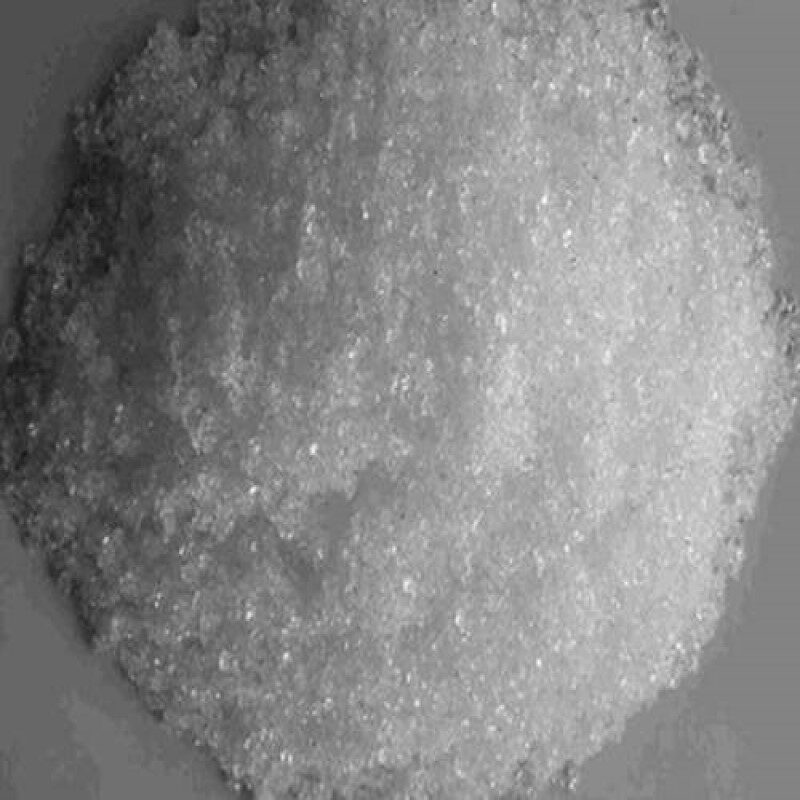Description
Remarks: The material complies as per above specification.
Uses: It is mostly used as a component in oil well drilling fluid it occurs naturally as the mineral barite. Barium sulfate is a contrast agent. Barium sulfate works by coating the inside of your esophagus, stomach, or intestines which allows them to be seen more clearly on a CT scan or other radiologic (x-ray) examination. Barium sulfate is used to help diagnose certain disorders of the esophagus, stomach, or intestines
Packing: 25 kg HDPE BAGS/HDPE Drum
For AMIZARA SPECILITY CHEMICALS LLP
Barium Sulphate FAQs
1. What are the main applications of Barium Sulphate provided by Amizara Speciality Chemicals?
Amizara Speciality Chemicals’ Barium Sulphate is widely used in industries such as paints, coatings, and plastics, where it serves as a filler and pigment to impart specific properties to end products.
2. How does the particle size of Barium Sulphate from Amizara Speciality Chemicals impact its performance in different applications?
The particle size of our Barium Sulphate is carefully controlled to ensure optimal dispersion, opacity, and compatibility with various formulations, enhancing product performance and quality.
3. Does Amizara Speciality Chemicals provide customized formulations or grades of Barium Sulphate?
Yes, we offer tailored solutions to meet specific customer requirements, including customized formulations, particle sizes, and packaging options for Barium Sulphate, ensuring optimal performance and compatibility with diverse applications.
4. What measures does Amizara Speciality Chemicals take to ensure the quality and purity of its Barium Sulphate product?
Our Barium Sulphate undergoes rigorous quality control procedures, including testing for purity, consistency, and compliance with relevant industry standards, to deliver superior performance and reliability.
MSDS
Barium Sulfate MSDS Sheet, Material Safety Data Sheet
1. Product Identification
| Product Name & Other Names: |
Barium Sulfate or Sulfuric acid, barium salt or Barytes or Blanc fixed or Barite |
| CAS No.: |
7727-43-7 |
| EINECS EC Number: |
231-784-4 |
| Molecular Weight: |
233.39 |
| Chemical Formula: |
BaSO4 |
| Recommended usage: |
Industrial Manufacturing. |
| Suppliers: |
As per letterhead. |
2. Hazards Identification
GHS, Globally Harmonized System Classification in accordance with 29 CFR 1910 Classification according to Regulation (EC) No 1272/2008
- Not a hazardous substance or mixture according to Regulation (EC) No. 1272/2008.
- This substance is not classified as dangerous according to Directive 67/548/EEC.
Labeling according to GHS & Regulation (EC) No 1272/2008
| Signal Word: |
None |
| Hazards not otherwise classified (HNOC): |
May causes mild skin irritation.
May causes mild eye irritation. |
Precautionary statements:
| P261: |
Avoid breathing dust/fume/gas/mist/vapors/spray. |
| P262: |
Do not get in eyes, on skin, or on clothing. |
| P281: |
Use personal protective equipment as required. |
| P302+P352 – IF ON SKIN: |
Wash with plenty of soap and water. |
| P303+P361+P353 – IF ON SKIN (or hair): |
Remove/Take off immediately all contaminated clothing. Rinse skin with water/shower. |
| P304 + P340 – IF INHALED: |
Remove victim to fresh air and keep at rest in a position comfortable for breathing. |
| P305 + P351 + P338 – IF IN EYES: |
Rinse cautiously with water for several minutes. Remove contact lenses, if present and easy to do. Continue rinsing. |
| P337+313:/strong> |
If eye irritation persists get medical advice/attention. |
3. Composition/Information on Ingredients
| Product Name & Other Names: |
Barium Sulfate or Sulfuric acid, barium salt or Barytes or Blanc fixed or Barite |
| CAS No.: |
7727-43-7 |
| EINECS EC Number: |
231-784-4 |
4. First Aid Measures
| Inhalation: |
Remove to fresh air. Get medical attention for any breathing difficulty. |
| Ingestion: |
Do NOT induce vomiting unless directed to do so by medical personnel. Never give anything by mouth to an unconscious person. If large quantities of this material are swallowed, call a physician immediately. Loosen tight clothing such as a collar, tie, belt, or waistband. Give several glasses of water to drink to dilute. If large amounts were swallowed, get medical advice. |
| Skin Contact: |
Wash exposed area with soap and water. Get medical advice if irritation develops. |
| Eye Contact: |
Check for and remove any contact lenses. In case of contact, immediately flush eyes with plenty of water for at least 15 minutes. Cold water may be used. Get medical attention if irritation occurs. |
5. Fire Fighting Measures
| Fire: |
Not considered to be a fire hazard. |
| Explosion: |
Not considered to be an explosion hazard. |
| Fire Extinguishing Media: |
Use any means suitable for extinguishing surrounding fire. |
| Special Information: |
In the event of a fire, wear full protective clothing and NIOSH-approved self-contained breathing apparatus with full face piece operated in the pressure demand or other positive pressure mode. |
6. Accidental Release Measures
Methods and materials used for containment Cleanup procedures and Storage:
| Personal precautions, protective equipment, and emergency procedures: |
Ventilate area of leak or spill. Avoid breathing dust/fumes/gas/mist/vapors/spray. Use individual protective equipment (waterproof boots, suitable protective clothing, safety glasses, etc.). Restrict unprotected personnel from the area. Prevent any contact with hot surfaces. Do not approach facing the wind. Do not touch the spilled material. |
| Environmental precautions: |
Do not let the product enter drains, soil, or water sources. |
| Small Spill: |
Use appropriate tools to put the spilled solid in a convenient waste disposal container. Finish cleaning by spreading water on the contaminated surface and dispose of according authority requirements. |
| Large Spill: |
Contain spilled material. Cover with an inert, non-combustible absorbent material, (e.g. sand, earth, diatomaceous earth, vermiculite). Vacuum or sweep-up and remove to an approved disposal container. Finish cleaning by spreading water on the contaminated surface and allow to evacuate as per law. |
7. Handling and Storage
| Precautions for safe handling: |
Apply according to good manufacturing and industrial hygiene practices. Ensure proper ventilation. Wash thoroughly after handling. Do not drink, eat, or smoke while handling. Avoid contact with skin, eyes, and clothing. Minimize dust generation. Avoid breathing dust/fumes/gas/mist/vapors/spray. Avoid
contact with eyes, skin, and clothing. Keep container tightly closed. Avoid ingestion and inhalation. Use individual protective equipment (waterproof boots, suitable protective clothing, safety glasses, etc.). Prevent any contact with hot surfaces. |
| Conditions for safe storage, including any incompatibilities: |
Store in cool, dry, and ventilated area away from heat sources and protected from sunlight in tightly closed original container. Keep air contact to a minimum. Store protected from heat, sparks and ignition sources and incompatible materials. Avoid contact with skin and eyes. Avoid inhalation of dust/mist/vapor. Do not store with incompatible materials like strong oxidizing agents, aluminum, phosphorus. Avoid moisture. |
8. Exposure Controls/Personal Protection
- Airborne Exposure Limits:
- OSHA Permissible Exposure Limit (PEL): 15 mg/m3 total dust, 5 mg/m3 respirable dust
- ACGIH Threshold Limit Value (TLV): 10 mg/m3 (TWA) Ventilation System: In general, dilution ventilation is a satisfactory health hazard control for this substance. However, if conditions of use create discomfort to the worker, a local exhaust system should be considered.
| Personal Respirators (NIOSH Approved): |
If the exposure limit is exceeded and engineering controls are not feasible, a half face piece particulate respirator (NIOSH type N95 or better filters) may be worn for up to ten times the exposure limit or the maximum use concentration specified by the appropriate regulatory agency or respirator supplier, whichever is lowest.. A full-face piece particulate respirator (NIOSH type N100 filters) may be worn up to 50 times the exposure limit, or the maximum use concentration specified by the appropriate regulatory agency, or respirator supplier, whichever is lowest. If oil particles (e.g. lubricants, cutting fluids, glycerin, etc.) are present, use a NIOSH type R or P filter. For emergencies or instances where the exposure levels are not known, use a full-face piece positive-pressure, air-supplied respirator. |
| WARNING: |
Air-purifying respirators do not protect workers in oxygen-deficient atmospheres. |
| Skin Protection: |
Wear protective gloves and clean body-covering clothing. |
| Eye Protection: |
Use chemical safety goggles. Maintain eye wash fountain and quick-drench facilities in work area. |
9. Physical and Chemical Properties
| Appearance: |
Fine, white powder. |
| Odor: |
Odorless. |
| Odor threshold: |
Not available. |
| pH: |
5% in water is neutral to litmus. |
| Relative density: |
around 4.5 |
| Boiling Point: |
1600C (2912F) Decomposes. |
| Melting Point: |
1580C (2876F) |
| Flash point: |
Not available. |
| Auto-ignition temperature: |
Not available. |
| Decomposition temperature: |
Not available. |
| Upper/lower flammability or explosive limits: |
Not available. |
| Vapor pressure: |
Not available. |
| Vapor density: |
Not available. |
| Evaporation rate: |
Not available. |
| Flammability (solid, gas): |
Not available. |
| Partition coefficient: n-octanol/water: |
Not available. |
| Solubility: |
Insoluble in water. |
| Viscosity: |
Not available. |
10. Stability and Reactivity
| Stability: |
Stable under ordinary conditions of use and storage. |
| Hazardous Decomposition Products: |
Burning may produce sulfur oxides. |
| Hazardous Polymerization: |
Will not occur. |
| Incompatibilities: |
Aluminum, phosphorus. |
| Conditions to Avoid: |
Dusting and incompatibles. |
11. Toxicological Information
No LD50/LC50 information found relating to normal routes of occupational exposure.
| Carcinogenic Effects: |
Not a reported carcinogen by IARC, NTP, ACGIH, OSHA. |
| Mutagenic Effects: |
Not available. |
| Teratogenic Effects: |
Not available. |
| Developmental Toxicity: |
Not available. |
| Reproductive Effects: |
No information available. |
12. Ecological Information
| Persistence and Degradability: |
No information available. |
| Mobility: |
No information available. |
| Bioaccumulation/ Accumulation: |
This material may bio accumulate to some extent. |
| Results of PBT and vPvB assessment: |
No data available for assessment. |
13. Disposal Considerations
Whatever cannot be saved for recovery or recycling should be managed in an appropriate and approved waste disposal facility. Processing use or contamination of this product may change the waste management options. State and local disposal regulations may differ from federal disposal regulations. Dispose of container and unused Barium Sulfate or Barium Sulphate in accordance with legal requirements.
14. Transport Information
Not regulated by DOT USA, IATA, IDMG, ADR/RID.
15. Regulatory Information
USA:
- SARA 311/312: Acute: Yes; Chronic: No Fire: No Pressure: No Reactivity: No (Pure / Solid)
- SARA 302: No chemicals in this material are subject to the reporting requirements of SARA Title III, Section 302.
- SARA 313: This material does not contain any chemical components with known CAS numbers that exceed the threshold (De Minimis) reporting levels established by SARA Title III, Section 313.
16. Other Information
DISCLAIMER:
The information and recommendations set forth herein (hereinafter “Information”) are presented in good faith and believed correct as of the date hereof. It is compiled from various sources and it is not necessarily all inclusive nor fully adequate in every circumstance. In addition, these suggestions should not be confused with nor followed in violation of applicable laws, regulations, rules or insurance requirements applicable. This MSDS sheet is intended only as a guide to the appropriate precautionary handling of the material by a properly trained person using this product. Individuals receiving the information must exercise their independent judgment in determining its appropriateness for a particular purpose.




